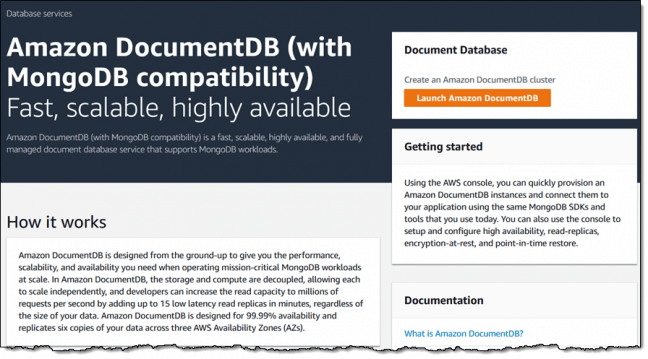With the introduction of its Amazon DocumentDB database service, AWS is in direct competition with MongoDB’s widely used cloud-based open source document database service for semi-structured data.
With the launch of the new service, the hyperscaler claims to want to serve the current end users of the MongoDB applications and tools in particular. It recognizes that many end users use these solutions to store, retrieve and manage large amounts of semi-structured data to use in and develop business-critical software applications.
Problems MongoDB on AWS
Nevertheless, the hyperscaler observes that many end users find it difficult to run MongoDB on the AWS cloud platform. This allows these users to use only a fraction of all the applications offered by the open source document database service. Especially when it comes to the functionality of the MongoDB application programming interface.
In addition, many end users would find it difficult to build applications based on MongoDB in combination with high availability and the ability to quickly expand the services. Especially as it would be difficult to set up and manage clusters.
AWS DocumentDB fully combatable
AWS would not be AWS, of course, to offer a solution with its own service. Amazon DocumentDB is fully compatible with the MongoDB applications and tools and is fully compatible with the AWS cloud. This service is actually a repackaged version of MongoDB’s existing open source document database service, but of course solves the problems of the open source solution found above on the AWS cloud platform.
Specifically, the now launched database uses the open-source MongoDB 3.6 API to deliver the same answers that end users expect from a MongoDB server. In addition, the AWS solution offers, again in its own words, a standard distributed, fault-tolerant and self-healing storage system. This storage system can be expanded to 64 TB per cluster. Over-provisioning storage capacity must therefore be a thing of the past, according to AWS.

According to the hyperscaler, the DocumentDB service also offers more efficiency in source use because database changes are only written on the storage layer. In addition, the database0service has advanced query processing and connection pooling. This should provide the service twice the througput of a normal MongolDB database service, according to the hyperscaler. Finally, the AWS service would be available up to 99.99 percent by replicating customer data six times to three global AWS zones.
This news article was automatically translated from Dutch to give Techzine.eu a head start. All news articles after September 1, 2019 are written in native English and NOT translated. All our background stories are written in native English as well. For more information read our launch article.